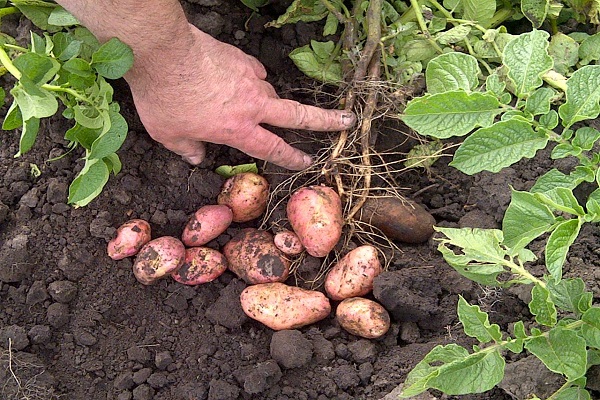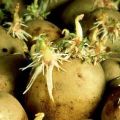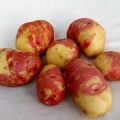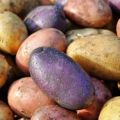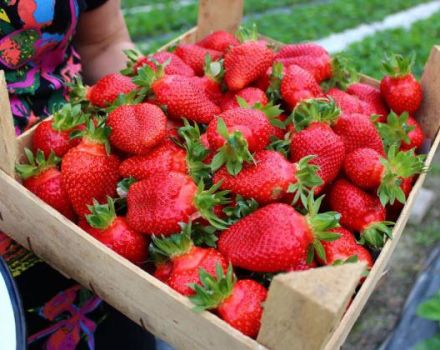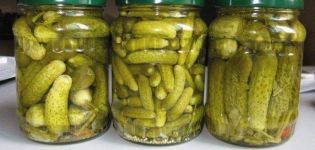Description of the Arosa potato variety, cultivation features and yield
The Arosa potato variety, bred by breeders from Germany less than 10 years ago, is grown not only in Europe, it is also popular on other continents. Tubers are used for the preparation of various dishes, side dishes, and the production of chips. Boiled young potatoes, which they begin to dig up a month and a half after the emergence of shoots, is adored by both adults and children. Arosa easily tolerates heat and drought, which allows grow potatoeswithout installing an irrigation system.
Description of the variety
From each bush of a plant that has a beautiful shape, smooth straight stems, abundant foliage, 15 or more tubers weighing 120 grams are dug out. The yield of Arosa per hectare exceeds 55 tons. Potatoes are different:
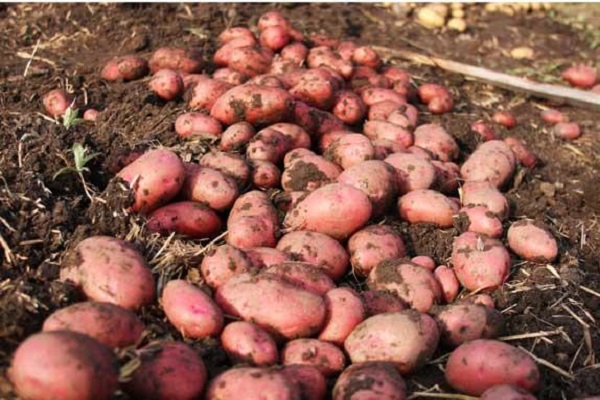
- yellow pulp;
- pink skin;
- a rough surface covered with eyes.
One root vegetable contains a little less than 15% starch, contains folic acid, phosphorus, magnesium, calcium. Young potatoes are rich in vitamin C, which regenerates tissue cells, strengthens bones and teeth, and protects the body from infection.
The description of the variety and its external characteristics attracted farmers and gardeners from different regions of Russia.
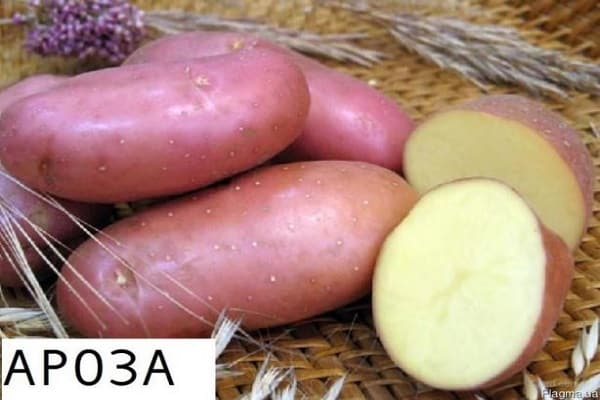
Arosa is cultivated in Western Siberia and in the southern regions, harvesting excellent harvests. Potatoes emerge evenly, branches grow straight, dense inflorescences have a reddish color.
Root vegetables fully ripen in 70 days, but dig them up for cooking, baking, frying, making salads after 45-50.
Gardeners love Arosa potatoes:
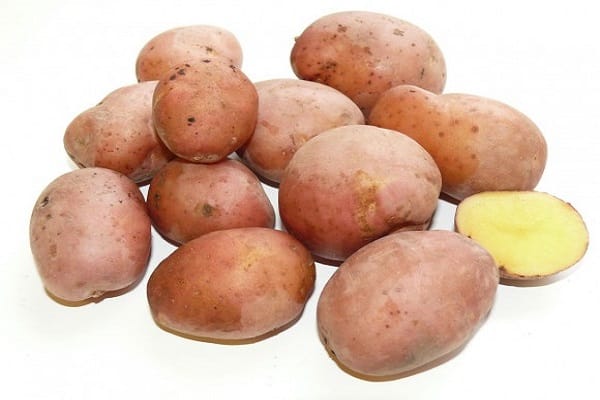
- for unpretentious care;
- resistance to viruses;
- great taste.
Farmers appreciate the variety for the fact that the tubers are not damaged during transportation and retain their presentation for a long time. Such characteristic as keeping quality, which is 94%, is also of great importance for them. The Arosa variety adapts to any soil, tolerates both cold snap and heat normally.
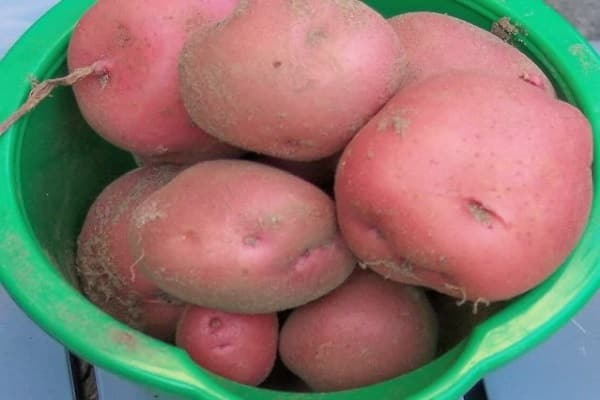
Growing
The tubers are planted in the ground when it warms up well. Sowing begins in the southern regions, in Siberia and in the middle lane - a week or 2 later. So that the variety does not pump up with yield, choose a root crop:
- weighing from 55 to 75 grams;
- with eyes on the surface;
- no dents or scratches.
Seedlings will appear earlier if the potatoes left for seeds are germinated in advance. The best place for the garden will be the area where the following were located:
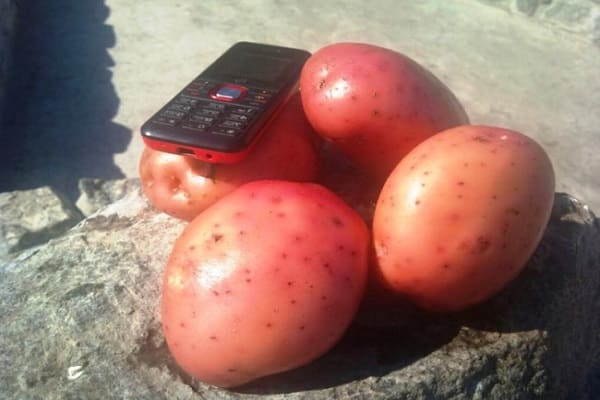
- spring and beans;
- mustard and cabbage;
- rapeseed and radish.
The soil is fed with manure, dug up, without loosening the lumps, insects that live in the ground will freeze in winter.
When the soil warms up, the tubers are planted.To do this, every 30 cm, a place for the hole is marked, 70 is left between the rows. Sprouted potatoes are placed in the holes and covered with soil.
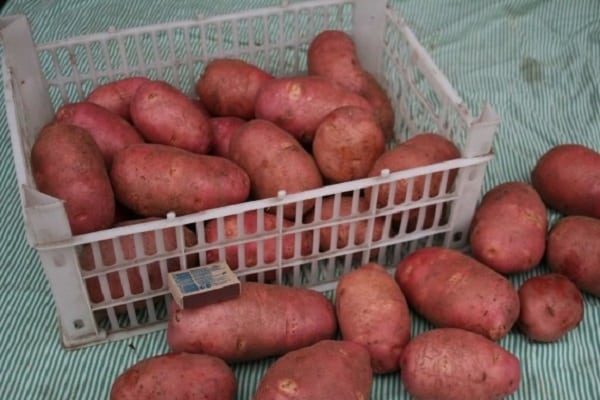
Care features
To grow a good harvest, it is not enough just to follow the rules of agricultural technology. The ripening period of tubers is influenced not only by the weather, but also by how the rules for caring for Arosa potatoes are followed, the description of the variety indicates the need for:
- hilling the beds;
- fertilizing with fertilizers;
- weed removal;
- moistening the soil.
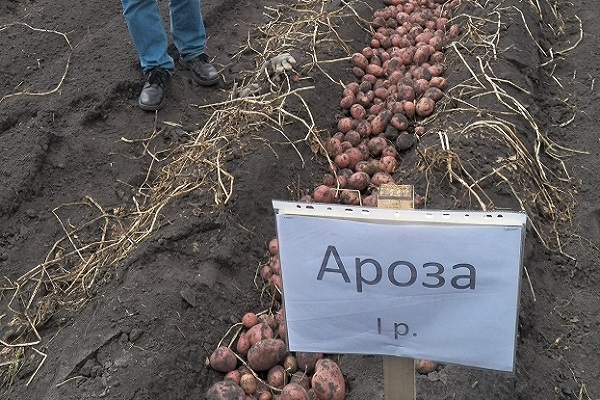
Despite the resistance to drought and heat, in order to grow large root crops, the beds need to be watered. It is better to do this in the early morning or late at night, otherwise there is a risk of sunburn on the foliage. It is imperative to moisten the soil when the sprouts emerge on the surface, the formation of buds, after flowering. Stop watering potatoes during the rains and three weeks before digging out the tubers.
The bushes are spud several times per season, the first when their height reaches 18 or 20 cm. During feeding, the dosage of fertilizers must not be exceeded, since this deteriorates the taste of the tubers.
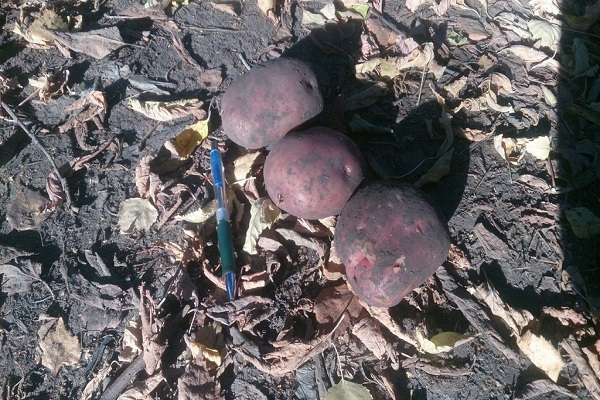
At the beginning of the growing season, it is better to use the minerals superphosphate, nitroammofosk. When buds are formed, potassium salt and ash are added under the root of the plant. The third feeding is optional. Nutrients are well absorbed when added with watering.
Experienced gardeners twice a season spray the tops with a solution of Bordeaux liquid.
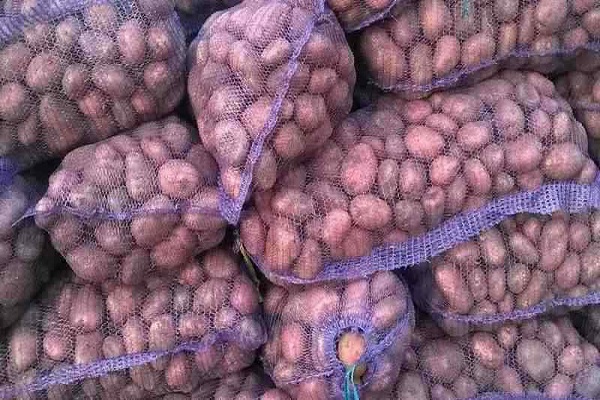
Advantages and disadvantages
Arosa potatoes have clear advantages over other varieties of this crop. Root crops are suitable for consumption already after a month and a half after planting, have a pleasant taste, high keeping quality. Arosa is not affected by many diseases, but requires mandatory treatment for scab and rhizoctonia. Drought resistance is an important advantage of the variety.
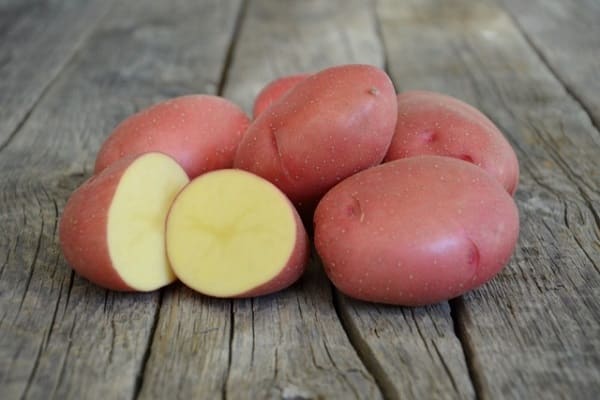
Pests and diseases
Arosa plantations attract with beautiful shrubs and lush foliage of a rich green hue, dense purple inflorescences.
The variety is not affected by mosaics - striped or wrinkled. Arosa rarely suffers from leaf curl and late blight, dry spotting, does not get sick:
- fusarium;
- verticillary wilting;
- potato crayfish.
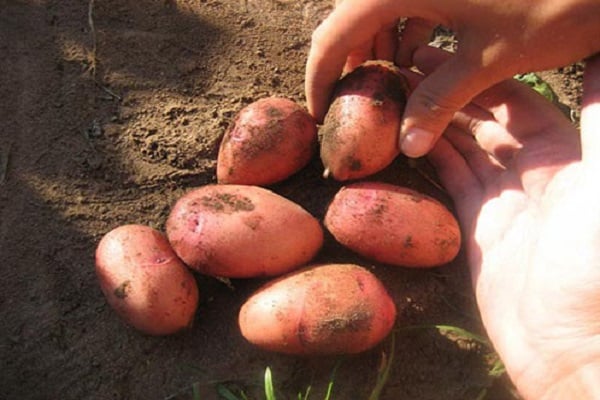
The variety is not resistant to rhizocnoniosis caused by pathogenic fungi. The problem is easy to spot in the spring. Not all planted tubers germinate, the emerging sprouts curl. Arosa is infected with a silvery scab. To prevent these diseases, seed is treated with fungicides or potassium permanganate.
To prevent the development of late blight, gardeners cut the tops two weeks before digging up the root crops.
Bears cause great harm to the crop. Insects, up to 5 cm long, break through tunnels in the ground, destroy sprouts and seeds, and damage tubers. To protect potatoes from this insect, root crops are treated with Prestige or Aktara before planting. They cope with it using insecticides Boverin, Medvedoks, Rembek.
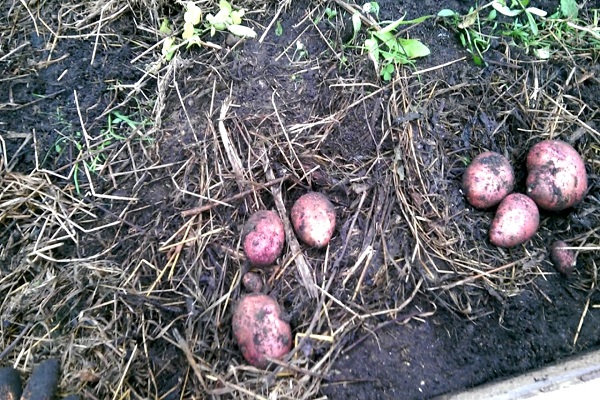
Colorado beetles in a short time are able to destroy not only the beds, but also entire fields of nightshade crops. They fight the parasite, which feeds on both tops and leaves using folk methods and by treating potatoes with chemicals. Not all pest preparations can destroy the Colorado potato beetles, because after a while the poisonous substances cease to be a danger to insects, the parasites get used to them.
The most effective in the fight against arthropods are systemic agents, the composition of which contains several active components. Bushido insecticide instantly paralyzes pests, affecting the nervous and digestive systems. When spraying potatoes with Bankol, Gulliver, Intavir, larvae and adults die.
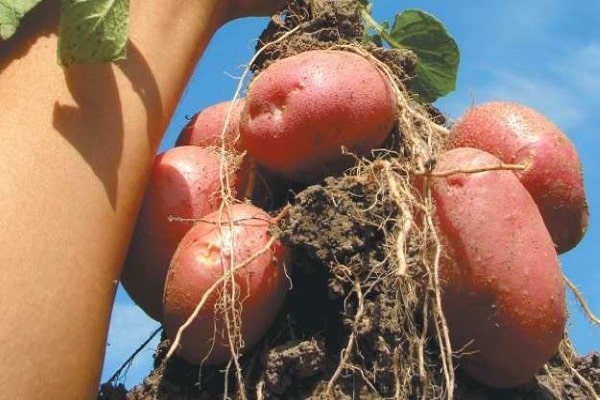
Harvesting and storage
Arosa tubers for making salads, cooking and frying are dug out already a month and a half after germination. For long-term storage, the production of chips is harvested 20 days later.
Root crops are dried and then sent to the basement or cellar. Arosa potatoes have excellent keeping quality, do not lose their taste and presentation until May. Judging by the reviews, this is one of the best early ripening varieties.
